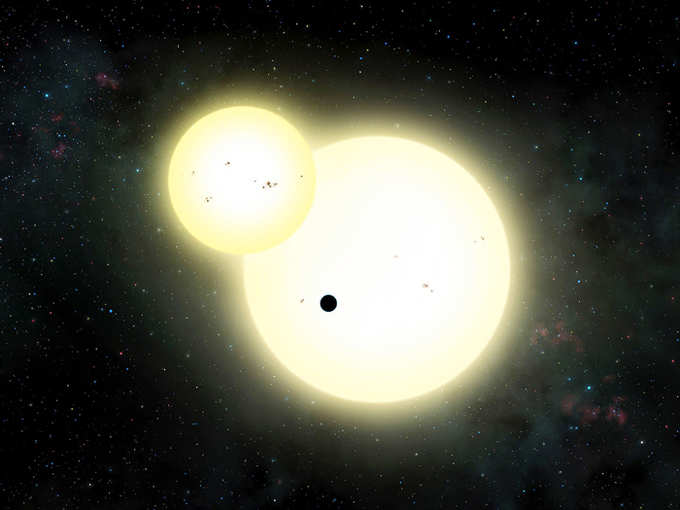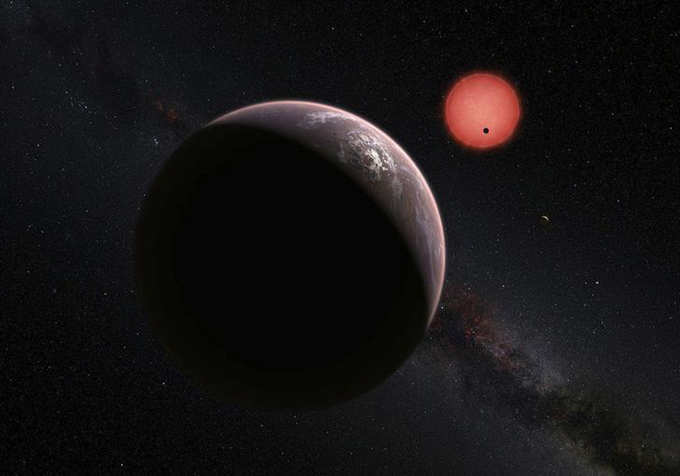 A team led by astronomers from
A team led by astronomers from Using what's called the
"It's a bit curious that this biggest planet took so long to confirm, since it is easier to find big planets than small ones," said SDSU astronomer
Notably, the first one to spot Kepler was
 Interesting facts about this newbie:
Interesting facts about this newbie:
Kepler-1647 is 3,700 light-years away and approximately 4.4 billion years old, roughly the same age as Earth.
The stars it is orbiting are similar to the sun, with one slightly larger than our home star and the other slightly smaller.
The planet takes 1,107 days (just over 3 years) to orbit its host stars. The planet is also much further away from its stars than any other circumbinary planet, breaking with the tendency for circumbinary planets to have close-in orbits.
Its orbit puts the planet within the so-called habitable zone.
Like Jupiter, however, Kepler-1647 b is a gas giant, making the planet unlikely to host life. Yet if the planet has large moons, they could potentially be suitable for life.
How the study is done
Planets that orbit two stars are known as circumbinary planets, or sometimes “Tatooine” planets, after
“But finding circumbinary planets is much harder than finding planets around single stars,” said SDSU author William Welsh. “The transits are not regularly spaced in time and they can vary in duration and even depth.”
Once a candidate planet is found, researchers employ advanced computer programs to determine if it really is a planet. It can be a grueling process.
(Image credit: NASA)